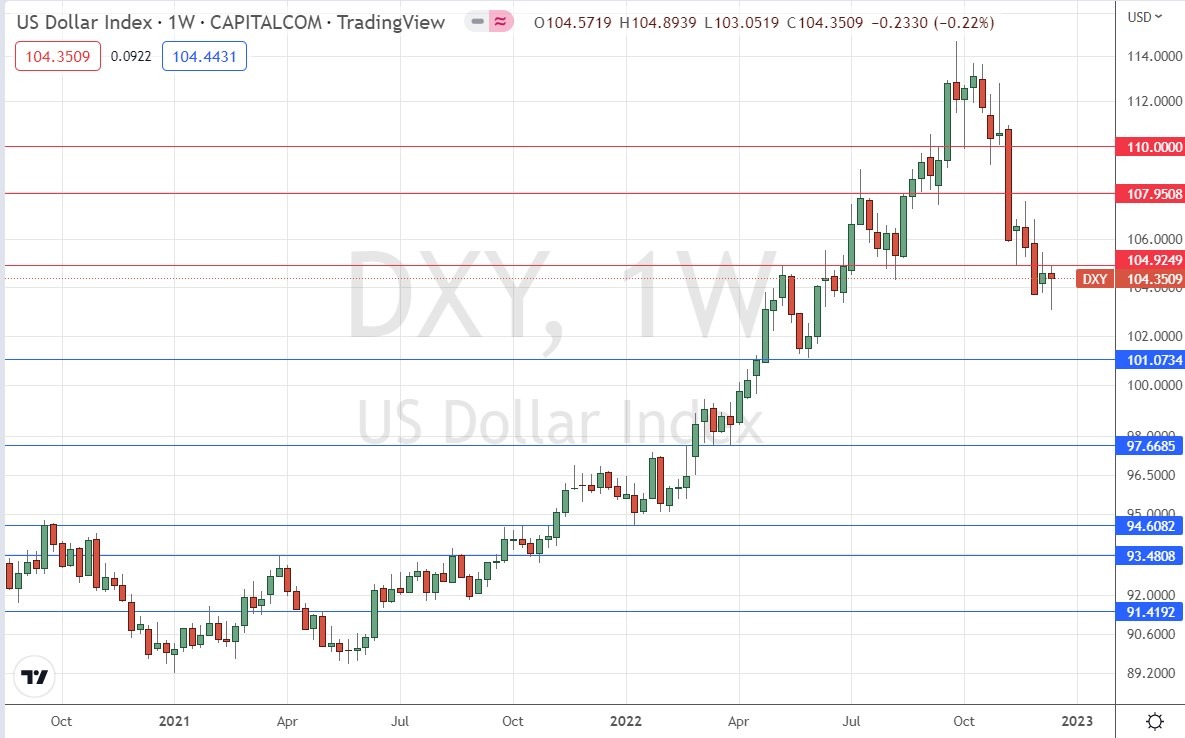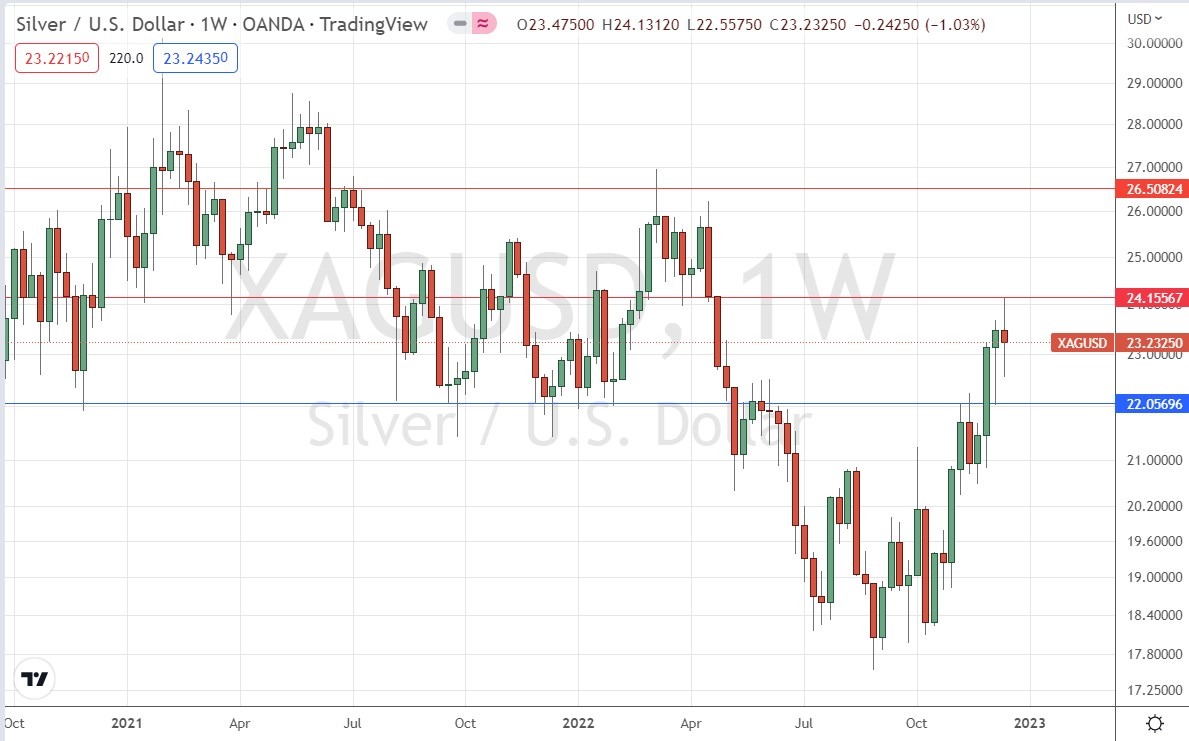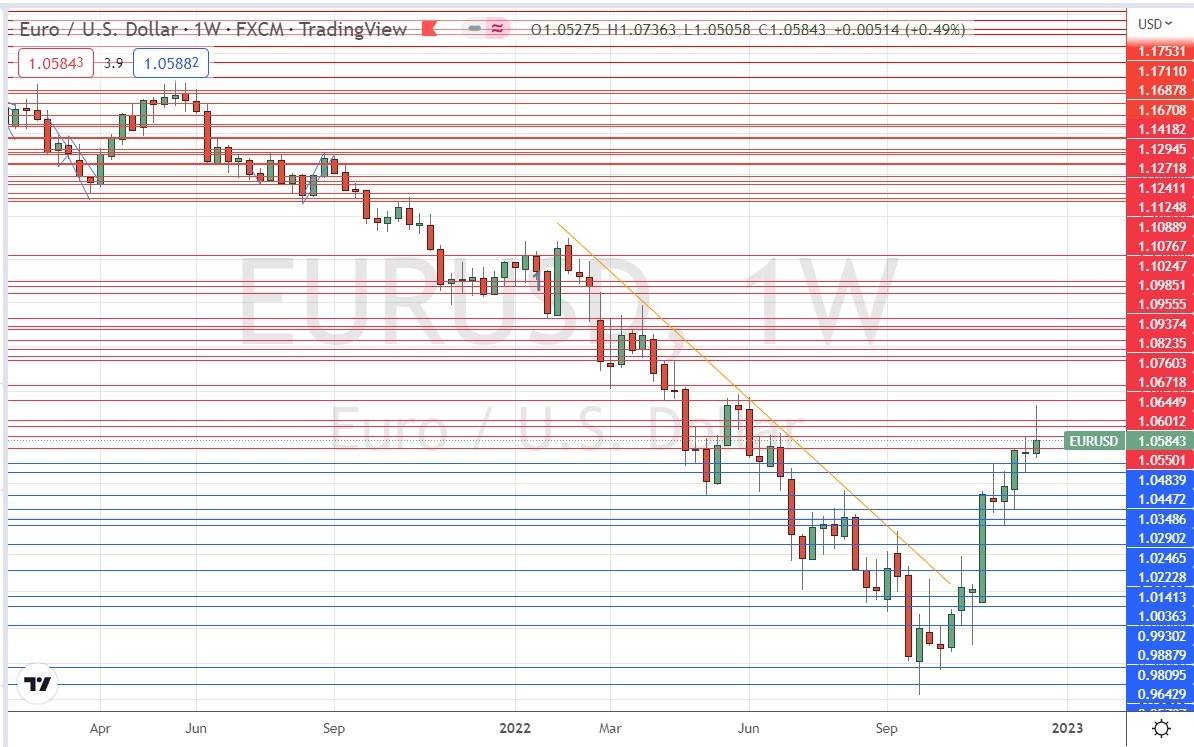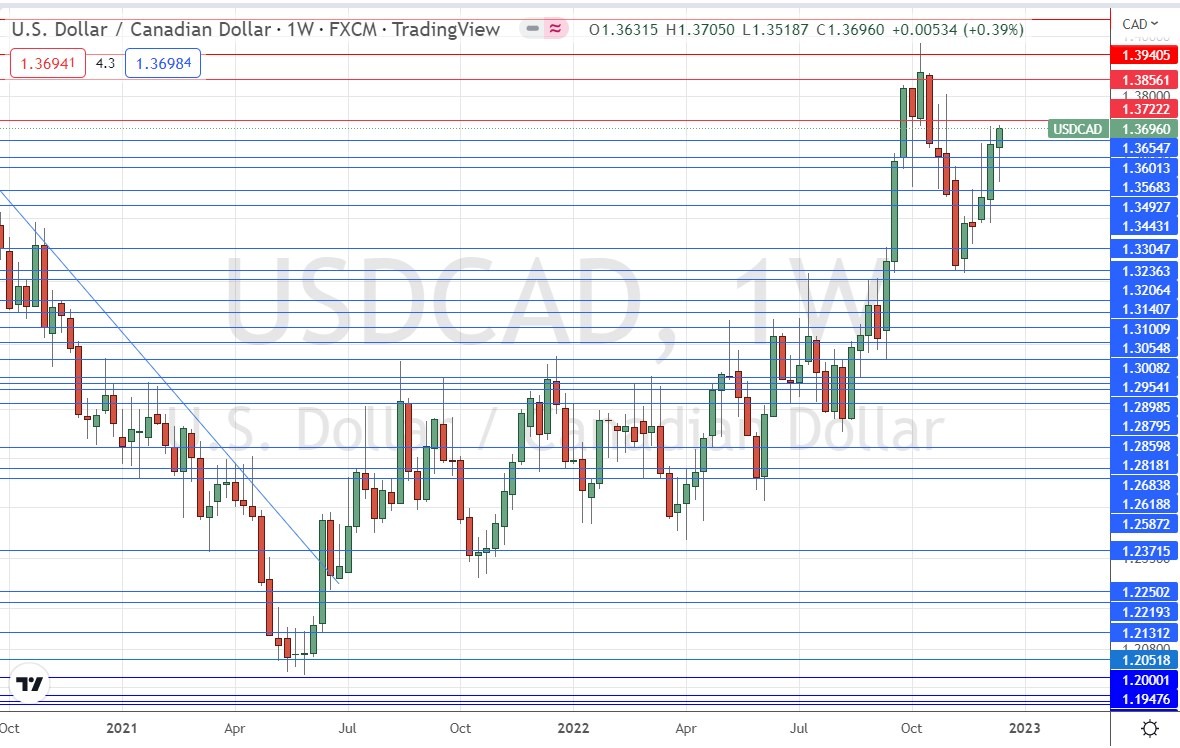The difference between success and failure in Forex / CFD trading is highly likely to depend mostly upon which assets you choose to trade each week and in which direction, and not on the exact methods you might use to determine trade entries and exits.
So, when starting the week, it is a good idea to look at the big picture of what is developing in the market as a whole, and how such developments and affected by macro fundamentals, technical factors, and market sentiment. There are some valid short-term trends in the market right now, which might be exploited profitably. Read on to get my weekly analysis below.
Fundamental Analysis & Market Sentiment
I wrote in my previous piece on 11th December that the best trade opportunities for the week were likely to be a long trade in Silver against the US Dollar (XAG/USD). I thought that there may also be short-term opportunities in taking a short trade in WTI Crude Oil. This was not a good call as XAG/USD fell by 1.03% over the next week.
The news is currently dominated by four major central banks hiking rates last week, with three of them clearly slowing their pace. All the rate hikes were expected and delivered as follows:
- US Federal Reserve: hike by 0.50% to 4.50%.
- European Central Bank: hike by 0.50% to 3.00%.
- Bank of England: hike by 0.50% to 3.50%.
- Swiss National Bank: hike by 0.50% to 1.00%.
The only real surprises from any of these four central banks was the Federal Reserve’s minor hawkish surprise in raising its forecast of the “terminal” rate to 5.1%, which it expects to reach during 2023, and the fact that two members of the Bank of England’s monetary policy committee voted to leave rates unchanged, a minor dovish surprise, which depressed the value of the Pound over the remainder of last week.
ECB President Lagarde promised more rate hikes, and while this is not a surprise it seems to have played a role in keeping the Euro first as last week’s top-performing major currency.
The major event that preceded these releases was lower than expected US inflation data, with the annualized rate coming in at only 7.1% compared to the expected 7.3%, a significant drop from last month’s rate of 7.7%.
It was the higher terminal rate forecast from the Fed which weighed most heavily on the market’s mind, eclipsing the good news on inflation. Therefore, the market remains within the grip of risk-off sentiment, with a rising US Dollar and lower stocks and other risky assets.
Other important data released last week:
- British inflation data showed a drop in the annualized rate from 11.1% to 10.7%, ahead of the 10.9% which had been widely expected.
- British GDP data exceeded expectations slightly, showing a month-on-month increase of 0.5% compared to the 0.4% which had been expected.
- New Zealand GDP exceeded expectations, with the quarterly rate at 2.0% when only 0.8% had been expected.
- US retail sales data came in considerably lower than had been expected, declining by 0.6% month-on-month when a decline of only 0.2% was expected.
- German, British, and French services & manufacturing PMI data, which mostly came in better than expected.
Global stock markets ended the week mostly lower. The Forex market saw most strength in the Euro last week, with the Australian Dollar the weakest major currency.
Rates of coronavirus infection worldwide rose for the sixth consecutive week. However, the raw numbers remain lower than in any previous major wave of infection. The most significant growths in new confirmed coronavirus cases overall right now are happening in Brazil, Guatemala, Honduras, Japan, Mongolia, and New Zealand.
The Week Ahead: 19th December – 23rd December 2022
The coming week in the markets is likely to see a lower level of volatility, as there are fewer major data releases scheduled, as follows:
- Bank of Japan Monetary Policy Rate and Statement
- Canadian CPI (inflation)
- US Core PCE Price Index
- Canadian GDP
- US CB Consumer Confidence
We are likely to see a quieter market than last week as there is considerably less data due, but we do have some major releases which should trigger some activity. It is also the last week before the Christmas holiday which might also raise the level of activity.
Technical Analysis
U.S. Dollar Index
The weekly price chart below shows the U.S. Dollar Index printed a bullish hammer candlestick which still showed a small fall over the week. However, the former support level at 102.94 has again acted as effective resistance. The chart is sending mixed messages.
The long-term bullish trend in the US Dollar is over technically, as we see the current price making a new 6-month low.
Short-term direction in the US Dollar looks likely to be bullish but this could easily evaporate as it is based more on market sentiment than technical analysis. Therefore, it may be wise to wait for US Dollar strength to fall off before entering any trades involving the Dollar on the short side.

XAG/USD (Silver)
Last week saw Silver print a doji candlestick which closed down after reaching the highest price since April this year. There is bullish momentum, but the doji could be a first sign that the bullish trend is coming to an end. The fact that the price action printed new resistance at $24.15 is also significant and a potential blow to bulls hoping for the price to reach the big round number at $25.
Although most commodities are not performing strongly in today’s market, Silver is a notable exception. Another reason bulls might be wise to be a little cautious as although the price of Gold has been rising lately, it is not performing as bullishly as Silver, which might be a reason to doubt that the price of Silver which go much higher over the short term.
I think that Silver will continue to rise, but I want to see a daily (New York) close above $24.15 before making any new long trade entries.

EUR/USD
Last week saw the EUR/USD currency pair print a something close to a hammer candlestick, but nothing that really looks bearish – this kind of out of position pin bar in fact suggests that the price will rise higher over the coming week.
The Euro was the strongest of all major currencies last week, boosted by the ECB’s rate hike and firm promise of more to come over 2023.
The price fell quite heavily off its recent multi-month high over the final two days of the week but is likely to recover firmly if the recent US Dollar strength drops off with an improvement in risk sentiment.
I will not enter a long trade in this currency pair until we get a daily close higher than the previous two daily closes. An alternative could be to look for long trades in Euro crosses with the weakest major currencies, such as EUR/AUD or EUR/CAD.

USD/CAD
Last week the USD/CAD currency pair printed a bullish candlestick with a healthy range and closed near its high. The Canadian Dollar is being hit due to residual weakness in Crude Oil, of which Canada is a major exporter. However, this cannot explain al the weakness in the Canadian Dollar, which is standing out as one of the weakest major currencies.
It may be a good idea to trade the CAD short only over the coming week, but the US Dollar might not be its best long counterparty. Using the Euro may be a better bet.

Bottom Line
I see the best opportunity in the financial markets this week as likely to be a long trade in Silver against the US Dollar (XAG/USD) following a daily close above $24.15 and in the EUR/USD currency pair following a daily close higher than the two previous daily closes.
Ready to trade our Forex weekly analysis? We’ve shortlisted the best Forex trading brokers in the industry for you.

